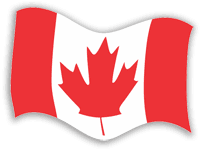|
“When I would speak at the United Nations on anything that had
to do with human rights or human security,” recalled one
experienced Canadian diplomat, “I (always) got a very respectful
hearing.” Why? The ambassador explained: “In terms of welcoming
others and integrating them into society, nobody does it better
than we do … and we get a lot of credit for that in the
international community.”
Canadian multiculturalism, in other words, is something the
world admires as perhaps the most recognized and celebrated
characteristic of Canadian citizenship. The Aga Khan, the leader
of the globe’s Ismaili Muslims, for one, has proclaimed that
Canada has done a superlative job in bringing peoples of
disparate race, ethnicity, and religion together.
The celebrated urban thinker Richard Florida pronounced Canada’s
multiculturalism, its “mosaic principle…one of the core enduring
principles of our economy and society,” and the Globe and Mail’s
national columnist John Ibbitson called the country’s “robust
multicultural identity” the key to “preventing the emergence of
a race-based underclass” like that in the United States and
Western Europe.
Certainly Canadians are proudly polite, generally tolerant and
relatively uncomplaining, making Canada perhaps the best nation
in which to make the difficult idea of multiculturalism work.
There is much patting ourselves on the back here, of course, and
it is worth recalling Montreal historian Desmond Morton’s
comment that “In the Olympics of self-admiration, Canadians
would compete eagerly — for their traditional bronze medal.”
But what is Canadian multiculturalism and where did it come
from?
The major political and cultural issues of the 1960s in Canada
centred on French-Canadian/English-Canadian relations, and the
rapid rise of nationaliste/indépendantiste sentiment in Quebec
led the federal government to establish a Royal Commission on
Bilingualism and Biculturalism in 1963. The commission
eventually produced a host of recommendations, some of which
were adopted, but an unintended result was that other ethnic
groups, notably Ukrainian-Canadians, began to fear that they
were being left out as the two “founding peoples” tried to deal
with their historic differences. Such pressure soon forced the
Royal Commission to consider the contribution of other ethnic
groups to the cultural enrichment of Canada. The commission
recommended the integration (not assimilation) into Canadian
society of ethnic groups with full citizenship rights and equal
participation in Canada’s institutional structure. In other
words, Canada was not to be a melting pot like the United States
where everyone blended down into Americans. Instead, Canada was
to be a mosaic, like a tile floor where the pieces were separate
but joined into a whole.
The commission’s recommendations led to a policy on
multiculturalism announced in October 1971. Its main aims were
to assist ethnic groups to retain and foster their identity and
to overcome the barriers to their full participation in Canadian
society. At the same time, they could keep their right to
identify with select elements of their cultural past if they so
chose. In effect, multiculturalism policy aimed to integrate
immigrants (and second and third generations) by offering them
equal rights and opportunities; in return, they were expected to
accept the ideas and rules that shaped and led Canadian society.
The aim was that multiculturalism would help immigrants to
integrate into Canadian culture and come to view their lives —
and their children’s opportunities — as tied into a full range
of Canadian social institutions, based on a common language
(either English or French). Ottawa created a Department of
Multiculturalism, allocated money to it, and soon a variety of
programmes were up and running.
There was great need for this new idea of a multicultural
Canada. Canadians were generally a tolerant people, but there
had been terrible outbreaks of racism or acts of violence and
hate against immigrants from certain parts of the world. Blacks
had been treated shamefully, for example, and prejudice against
Chinese, Japanese, and Indian immigrants had been strong.
Efforts to keep Asians out of Canada had been put into law, and
during World War II Japanese-Canadians had been forcibly moved
off the West Coast into the British Columbia interior to meet
public demands. And it wasn’t only those of different races who
suffered. Jews faced discrimination in Canada, and the
government turned its back on refugees trying escape Hitler’s
Europe. Many Ukrainians had been interned during World War I
because they came from part of the Austro-Hungarian Empire with
which Canada was at war; that they did not support that Empire
did not matter.
But that was all history now. Canada was setting out to change
the way it thought and acted. There would be no more efforts to
make immigrants to Canada into good Anglo-or Franco-Canadians.
There was to be no melting pot, no attempt to assimilate
newcomers. Now each immigrant could keep his or her culture and,
what was more, the Canadian government would help in this task.
It was a new idea for a changing nation. But would it work?
Would “old” Canadians accept it? That was the key question.
Historian J.L. Granatstein is editor of “The Canadian
Experience” and he writes on Canadian politics, foreign policy
and defence.
Next Instalment: Multiculturalism and its Problems
The Canadian Experience is a 52-week
history series designed to tell the story of our country to all
Canadians. Sponsored by Multimedia Nova Corporation and
Diversity Media Services partners, the series features articles
by our country’s foremost historians on a wide range of topics.
Past articles and author bios are available at
http://www.cdnexperience.ca. The Canadian
Experience is copyright ©2010-2011 Multimedia Nova
Corporation. |
List of
published "Canadian Experience" articles |

 #30 The Beginnings of Canadian Multiculturalism
#30 The Beginnings of Canadian Multiculturalism
